Affiliate disclosure: This post may contain affiliate links. Please see our Privacy Policy.
You don’t need to move out to the middle of nowhere to grow all (or most) of your own food. There’s a common misconception that to be “self-reliant” you need to live miles from your nearest neighbor. In reality, cultivating self-reliance is more about using your space, resources and time efficiently.
We moved out to 30 acres in the middle of nowhere Vermont, but practically speaking, not much changed in how we grow our own food. Before we found our forever homestead, we managed a suburban micro-farm on about 1/3rd of an acre, within spitting distance of our nearest neighbor.
On that small plot, even with 6 months of winter here in the north country, we were able to grow about half of our food. Now that we have more space to stretch out, we haven’t bothered. In reality, one or two people can’t manage more than an acre of densely planted food crops.
You don’t need a lot of space, you just need to know how to use the space you have efficiently.
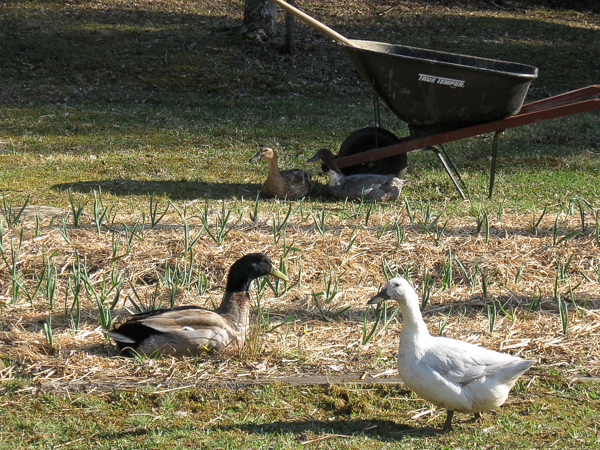
How to Get Started
“Anyone who thinks gardening starts in the spring and ends in the fall is missing the best part of the whole year. Gardening starts in January, with the dream.” – Josephine Nuese
Starting your own suburban micro-farm begins with the dream, and should be quickly followed by a lot of reading and research. While you can just throw some seeds in the ground, there’s an art to turning a small backyard into a productive landscape.
Before you get started, check out these great resources:
The Suburban Micro-Farm – The name says it all. Amy takes you through every last detail of turning your backyard into your own permaculture paradise. While she focuses on permaculture principles, relying heavily on mulch and time-saving strategies, she also incorporates a lot of annual crops into her plans.
The plans in the book never look like a “farm” but rather beautifully manicured suburban landscapes that just happen to grow food. She gives techniques for every nook and cranny of the yard, from shady zones to areas that may have polluted parking lot runoff or just about any suburban obstacle you may encounter.
If you plan on turning your backyard into a productive food forest without spending every waking moment doing it, this is the ultimate busy person’s guide.
Gardening When It Counts – The premise of this book is using your time to save money. When you’re unemployed, retired or otherwise short on cash, the author gives you techniques to make your yard productive to save money on groceries.
The author lived almost exclusively off of his garden for several years while things were tight, so he has a lot of credibility when it comes to productive suburban scale food farming. The sections on seed saving and organic soil amendments are thorough and impressive, and even a veteran gardener can learn a lot from this book’s techniques.
My only point of criticism is that the author is in love with his hoe…and focuses on the health benefits of long hours spent hoeing in the garden. There is no discussion whatsoever of labor-saving techniques.
Choose Your Methods
I’ll be honest and admit that I have a pretty strong bias towards permaculture. I’d rather mulch with a living groundcover than spend the day hoeing. If I can fertilize with chopped comfrey and herbs rather than store-bought chemicals (organic or otherwise), sign me up!
Nonetheless, if you’re going to garden, you’ll need to choose your methods.
Conventional v. Organic Agriculture – There’s a lot to be said for conventional chemical-based agriculture. It’s simple and time-tested.
However, if that’s what you want it’s easy enough to pick it up at the grocery store for a fraction of what it would cost you to grow it yourself. When you use chemical agriculture, you’re not really improving your self-reliance, because you’re still reliant on outside inputs.
Row Gardening v. Permaculture – For many gardeners, the season begins fresh with a clean till of the soil. That’s one way to go about it.
Creating a more permanent agriculture in your backyard allows you to invest in longer-term soil fertility and perennial crops like fruits and berries. Before you go right out and buy a tiller, consider the alternatives.
Other methods – There are a number of other methods that work well on a small backyard scale. Square foot gardening emphasizes reaping yields from very small spaces with focused tending. “Back to Eden” gardening makes extensive use of mulch to reduce weeding. Deep hay mulch gardening is much the same.
What’s my bias?
We lean strongly toward permaculture on our homestead and we’ve had great results. We’ve tried conventional row crops and it’s more labor and tilling than we can maintain. We’ve also tried Back to Eden Gardening, which works but requires a steady supply of just the right type of wood chips.
We can get plenty of wood chips…the problem is the requirements are specific. Try telling a landscaping or tree management company that they brought you the wrong type of chips and see if they do you a favor again…
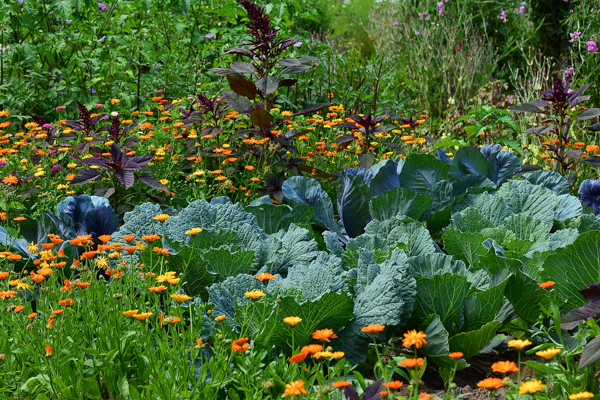
Annuals or Perennials…and Mindfulness
Many of us think of farms as row crops. Row after row of vegetables in an endless field. We often forget that apple orchards are “farms” too and a much better way to make productive use of a small space.
When we first moved to our land I was in a hurry to get perennials planted. Long-term crops, like Asparagus, take three years to the first harvest.
To me, there’s something about planting asparagus that says we mean to stay on this land for the long haul. It’s a commitment.
The problem is, when you’ve just moved to a place (or just started gardening), you don’t know much about your soil. Where does the water tend to collect?
How does the sun track across the garden space? What type of pests (deer, squirrels, or other) do we have?
All that lovely commitment asparagus we planted the first year died.
Take your first year as a learning year, and don’t invest more than the cost of a few seed packets or veggie starts. Spend your money on nice tea (or coffee) and a good yard chair, and spend time outside observing your garden. Becoming aware of subtle things that may impact your plants next season.
Incorporating Animals (or Not)
Being a “crazy chicken lady” is all the rage these days. Who could have predicted that? Still, there may be good reasons to stick to vegetable crops rather than try to incorporate animals into your food production plan.
When we started growing our own food, we wanted our own fresh eggs and couldn’t wait to get goats. Many years in, we’re happy to stick with one geriatric cat.
Keeping animals can be tricky, and most often it requires way more work than it provides rewards. That dozen eggs from your backyard flock likely cost around $10 once you include all the startup costs. Nonetheless, even if you are able to get going on the cheap, there are other sacrifices.
Who will tend them if you go out of town? If you’re in a cold climate, will you be as excited about tending them in January?
Think about the real costs and benefits before you get carried away.
I know, you’re still going to go pick up the first batch of “free to good home” goats you see on craigslist. (We did!) But still, don’t say I didn’t warn you.
Setting Reasonable Expectations
On a micro-farm, you’ve got to pick your battles. While you may have heard from some self-reliance guru that you can grow all the wheat your family needs on a 1/4 acre…that may not be the best use of your time and space. Start with high-value crops, that is, the crops you value most.
If you love raspberries, those first few picked off your backyard canes will be sweeter than all the wheat in the world.
Know that you need to set reasonable expectations when you start out. If you’ve never kept tomatoes alive, that’s a good first-year goal. Build on that, before you sink a lot of money into a large-scale operation and set yourself up for disappointment.
Learn From Each Growing Season
That said, start small but learn and grow each year! Every year should give you the opportunity to learn and look back on what you’ve done. What grows well in your area, land and soil?
Our soils are too wet for apples, but plums and currants don’t mind. We planted (and killed) a lot of apple trees before we learned our lesson.
Agriculture is personal. It combines what your personal goals are with the personality of your piece of land. It’s a compromise, that you play out every year.
Start small, and build on your successes.
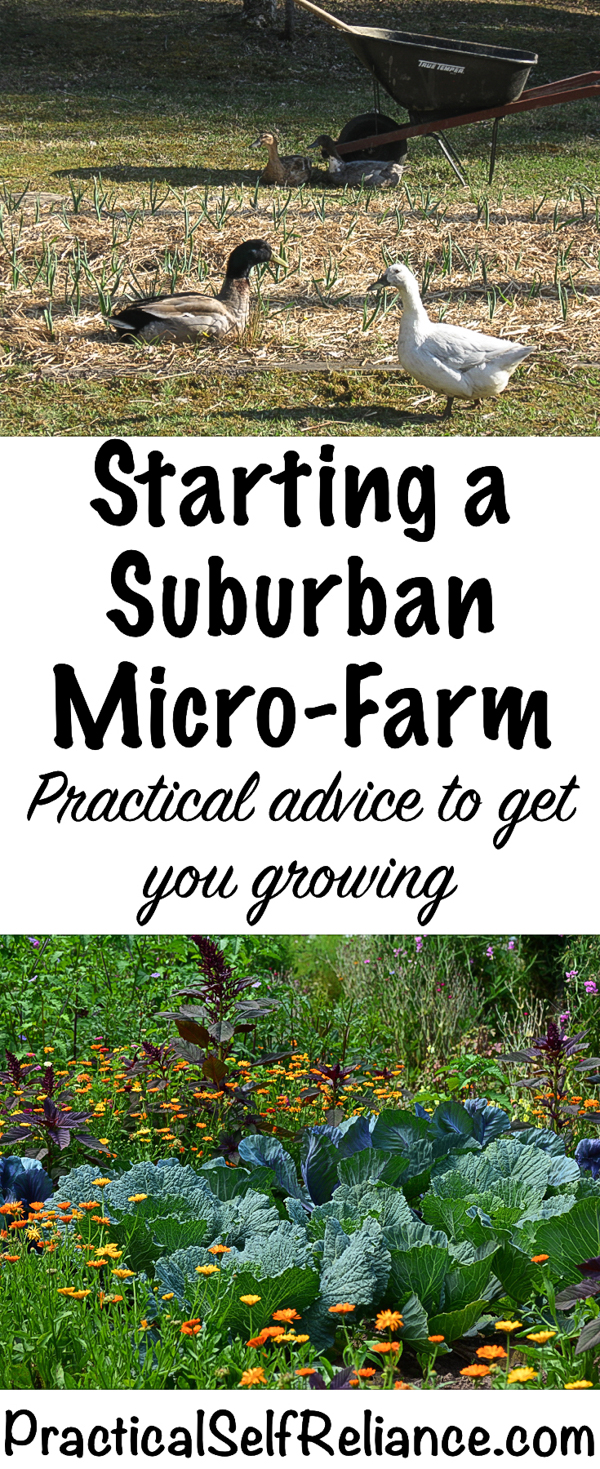
**Disclosure: Chelsea Green Publishing sent me an advance review copy of the Suburban Micro-Farm. My opinions, as always, are my own and I would never recommend something I didn’t love.
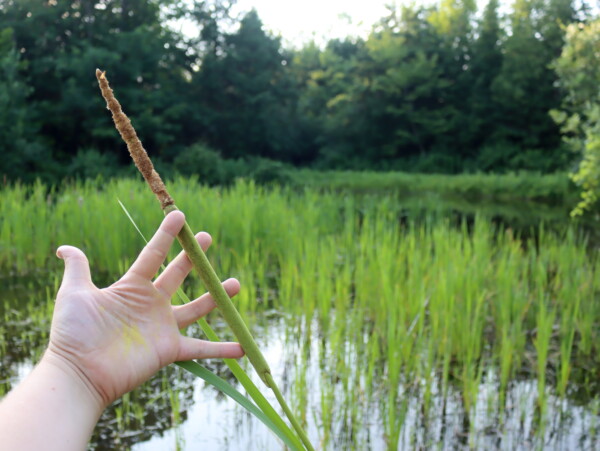
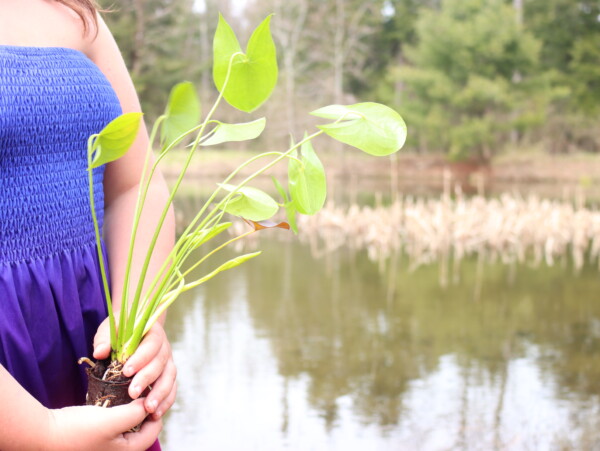
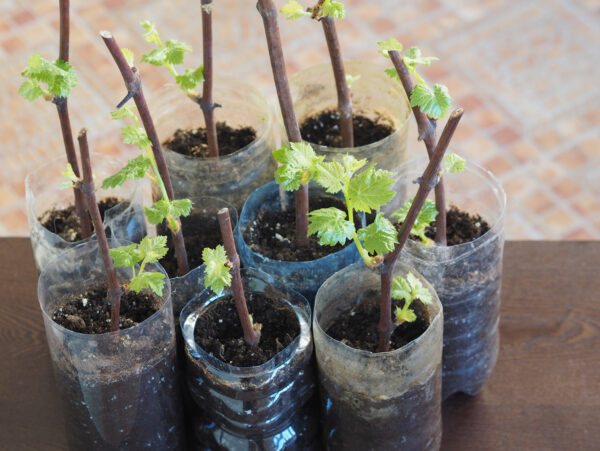
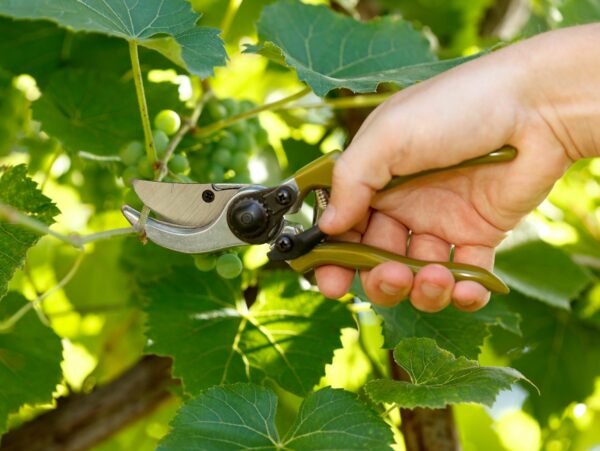
1 Comment